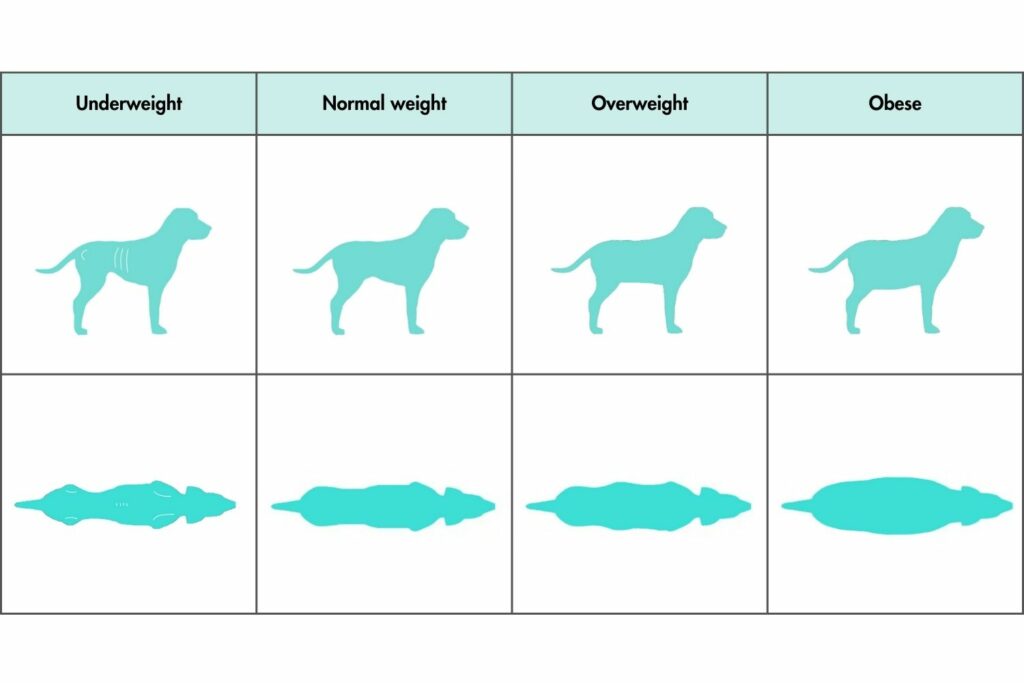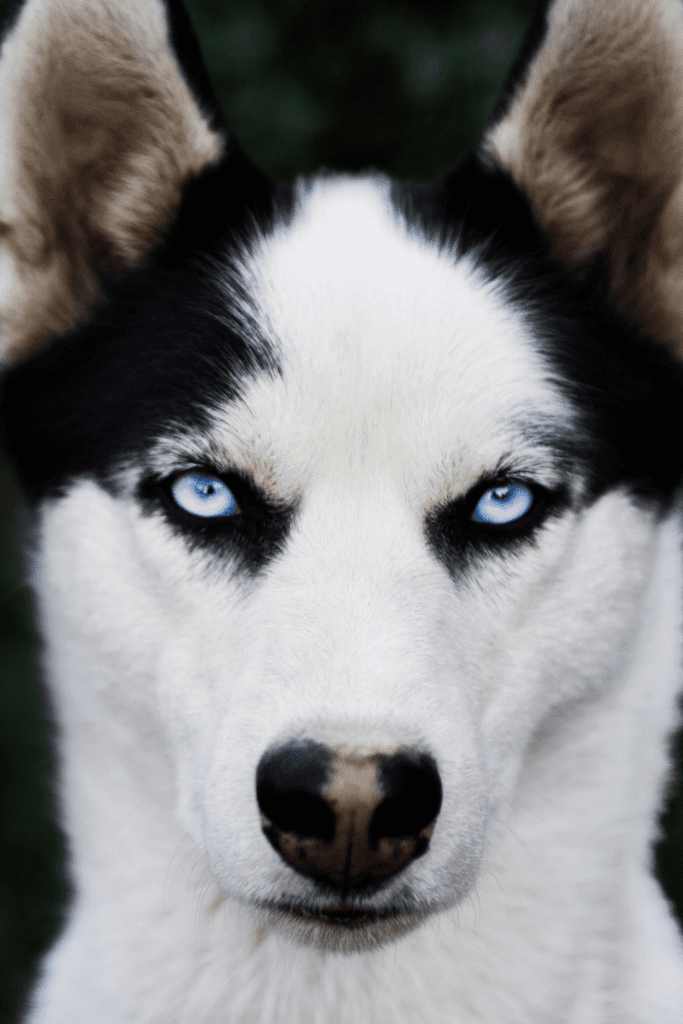8 signs your dog is healthy
 Synne Hemsen Berg
Synne Hemsen Berg
Promoting and recognizing good health in our dogs is crucial to ensuring they lead long, happy lives. Unlike us, our canine companions can’t verbally communicate their well-being. So, how do we determine their health status? We must be observant and recognize the tangible signs of health. Let’s delve into the eight essential signs that you should routinely monitor to ensure your dog’s optimal well-being.
1. Ideal Body Shape: Is Your Dog at a Healthy Weight?
A dog’s weight directly influences its overall health, affecting everything from joints to organs. Sadly, rising obesity rates in dogs contribute to conditions like diabetes, heart disease, and osteoarthritis. Viewed from above, a healthy dog’s shape will widen around the shoulders and narrow towards the hips, with a distinct waist. While ribs shouldn’t be visible, they should be palpable. From the side, a healthy dog should display a tummy tuck. For furry dogs, it’s imperative to feel underneath their coat to assess body condition. Check our weight management guide below.

Feeding your canine companion a balanced diet ensures they have the essential nutrients needed to maintain an ideal weight and muscle tone. A beneficial ingredient for weight management is L-carnitine, an amino acid that aids in the conversion of fat into energy. You can find L-carnitine in some premium dog food such as Nala Health.
2. Healthy Appetite: What Eating Habits Say About Their Health
A healthy dog will have an appropriate appetite for its age and activity level as well as drink enough water. Sudden changes in your dog’s eating and drinking habits without changes in activity levels are a warning sign something is not quite right. Loss of appetite is a non-specific sign that your dog is unwell, meaning it can be a symptom of a variety of diseases and conditions. Coupled with fever, pain, vomiting, diarrhoea or weakness require immediate medical attention by a vet. Also if your dog starts drinking excessively.

A healthy diet should include an appropriate balance of easily digestible protein, fat, carbohydrates, vitamins and minerals for your dog’s age, size and activity level. The quality of the food is also imperative for the health of your dog. A good ingredient list should have identifiable ingredients (eg. lamb meat, carrots, coconut oil, insect protein) as opposed to unidentified ingredients (meat meal, poultry fat, animal fat and vegetable derivatives).
Dog food with fillers such as maize, soy and wheat will provide your dog with empty calories and should be avoided. Try to look for foods that have healthy ancient grains instead. Many high-quality dog food brands will also include the amino acids L-Carnitine and Taurine as these are good for your dog’s heart and fat metabolism. Nala Health Dog Food has worked with innovative animal nutritionists to ensure the best quality nutrition for your dog. No fillers, artificial flavours, harmful preservatives or GMOs. We have only included premium, tasty and sustainable ingredients.
3. Fresh Smell: Signs of Good Hygiene in Dogs
Breath
A healthy mouth will have a neutral smell and clean white teeth. Bad breath can be an indication of an unhealthy gut, something being stuck between your dog’s teeth or an oral infection. Oral health is imperative for overall health as an infection in the mouth can spread to your dog’s vital organs if left untreated. Check your dog’s gums and teeth for plaque, oral disease or broken teeth when you brush them. Read our blog on how to keep your dog’s oral cavity healthy.

Skin and Coat
When clean, your dog’s body odour should not have a pronounced smell. Bad body odour can be a sign of amongst others; allergies, inflammation of anal sacs/impacted anal sacs, skin issues or a urinary tract infection. The condition of your dog’s skin and coat is one of the most obvious signs of whether your dog is healthy or not. A healthy dog will have a shiny and full coat. Their skin will not show signs of dryness or being too oily. If the coat becomes dull/lacklustre – or you see dandruff – it is one of the earliest signs of something not being quite right. It may be a sign of for example micronutrient deficiencies (such as omega 3, vitamin B, zinc etc). A diet that is balanced and includes good fatty acids will help with skin and coat health.
Ears
A dog’s ears should have a neutral smell and not a lot of ear wax. Your dog should also not have the desire to scratch them constantly. Make a habit of smelling your dog’s ears to quickly detect potential changes. Dogs with long ears are more prone to ear issues. Should you need to clean their ears, you can read our blog on how to safely do so.
4. Well-Formed Stools: What Healthy Dog Poop Looks Like
You can tell a lot about what is happening inside your dog’s body by looking at its stool. How often they have bowel movements and the condition of the faeces/poop gives a good indication of the quality of their food and digestive system. Healthy poop is firm (but not hard), brown and log-shaped. It should have an appropriate size for how much your dog eats and you should be able to easily pick it up without much residue on the ground. Dog food containing healthy fibre and probiotics will benefit gut health. Read more about a healthy stool/bowel in our blog here.

5. Moist, Cool Nose
A moist, cool nose/snout is normal and healthy. A dry and cracked nose can be a sign of dehydration or fever. The surface of your dog’s nose contains a protein called keratin. Sometimes it can grow too quickly, causing the nose to become dry and crusty. To determine whether your dog has a fever, you should take her temperature from the rectum. A normal temperature ranges from 38,3 degrees to 39,2 degrees.

6. Bright, Clear Eyes: The Window to Your Dog’s Health
Healthy eyes will be bright and clear, with pink inner lids. It is normal to have a little bit of discharge, especially in the morning (but it should be minimal). If your dog has a lot of secretion from the eyes, red eyes or cloudy eyes, it is often a sign of some kind of infection or illness.
Certain dog breeds such as Poodles, Boxers and Labrador Retrievers are more prone to developing eye issues due to their genetic makeup. Eye discharge, also known as “eye boogers” or “sleep” in a dog’s eyes, can be a common occurrence in many breeds. However, certain breeds are notably prone to having discharge from their eyes due to their facial structure, skin folds, or genetic predispositions. Pugs, Bulldogs, Pekingese, Cavalier King Charles Spaniels, Bichon Frises and Chow Chows are a few that are prone to discharge.

Astoundingly, indicators of several health issues, such as high cholesterol, may be subtly revealed through your dog’s ocular condition. One telltale sign of elevated cholesterol includes cloudy eyes or the appearance of white patches.
7. Active, Pain-Free Movement
Your dog’s energy level should be appropriate for its age. Puppies sleep a lot, but when awake they will have a lot of energy for play. Senior dogs will have lower energy levels and require shorter and more frequent walks. Your senior dog should, however, not show signs of pain when they are moving. Limping, stiffness or unnatural gait are all signs of some kind of pain such as arthritis or an injury.
8. Stable Mood & Behavior: Is Your Dog Happy and Stress-Free?
You know your dog’s personality and mood, and healthy dogs tend to have a stable mood. A well-socialized dog should not be aggressive and will enjoy the company of its family. If your dog shows sudden changes in their mood or behaviour – such as isolating themselves, irritability or aggression, it may be a sign of pain or disease. Sudden changes in mood and personality can also be a sign of psychological trauma, fear and/or stress – or even dementia.

What Defines a Healthy Dog
The foundation of a healthy dog lies in regular grooming, consistent exercise, genuine affection, and a nutritious diet. Familiarizing yourself with your dog’s normal appearance, behaviour, and scent will enable you to promptly identify any deviations that might suggest discomfort or illness. Establish a weekly routine to conduct a thorough body assessment, ensuring you’re always attuned to your dog’s well-being. Should any anomalies arise, it’s essential to consult with your veterinarian for the right intervention.

